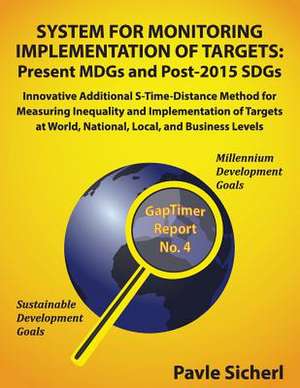System for Monitoring Implementation of Targets
Autor Pavle Sicherlen Limba Engleză Paperback
Preț: 127.52 lei
Nou
Puncte Express: 191
Preț estimativ în valută:
24.40€ • 26.09$ • 20.35£
24.40€ • 26.09$ • 20.35£
Carte disponibilă
Livrare economică 27 martie-10 aprilie
Preluare comenzi: 021 569.72.76
Specificații
ISBN-13: 9781514686454
ISBN-10: 1514686457
Pagini: 96
Dimensiuni: 216 x 279 x 6 mm
Greutate: 0.33 kg
Editura: CreateSpace Independent Publishing Platform
ISBN-10: 1514686457
Pagini: 96
Dimensiuni: 216 x 279 x 6 mm
Greutate: 0.33 kg
Editura: CreateSpace Independent Publishing Platform
